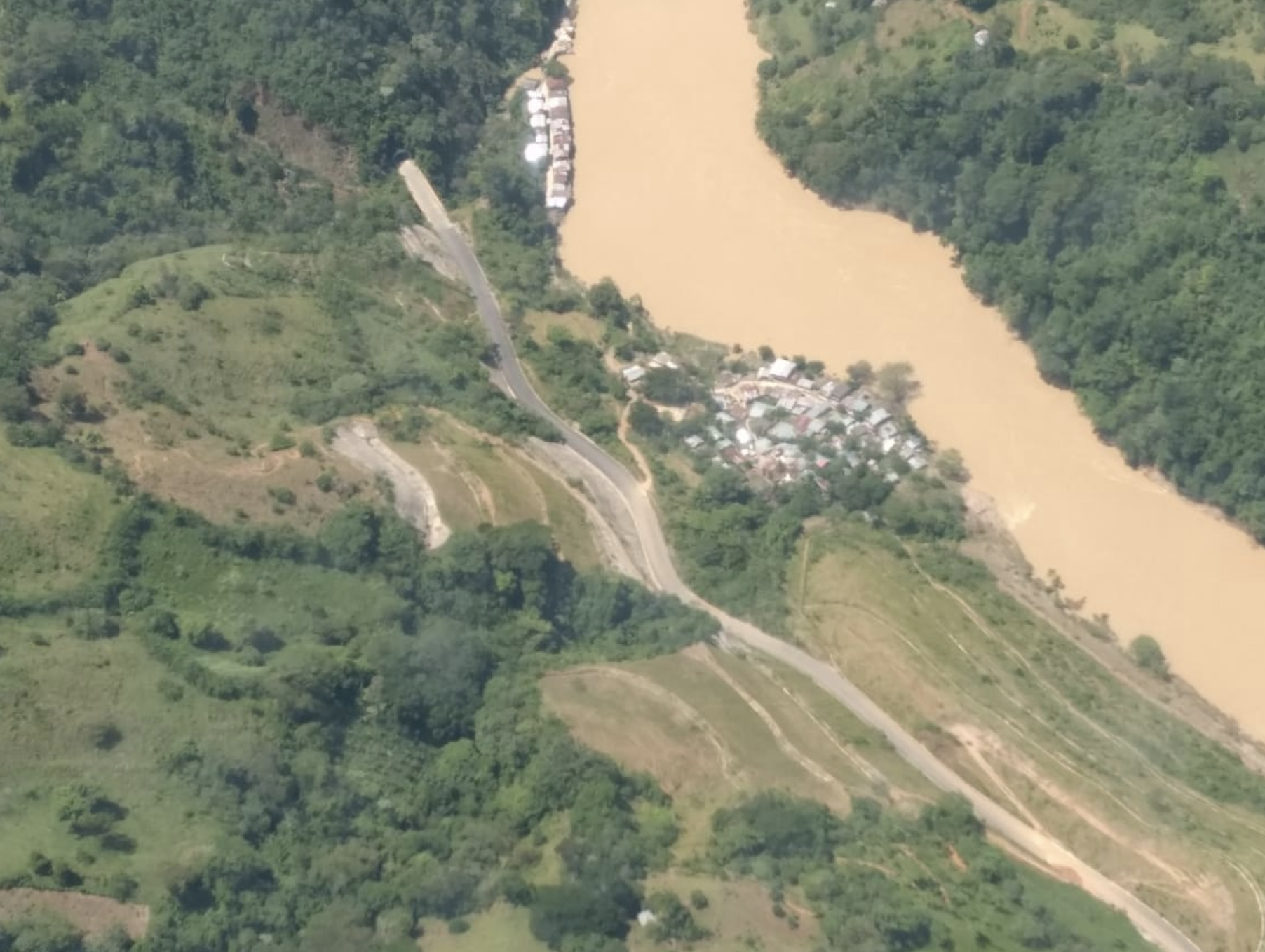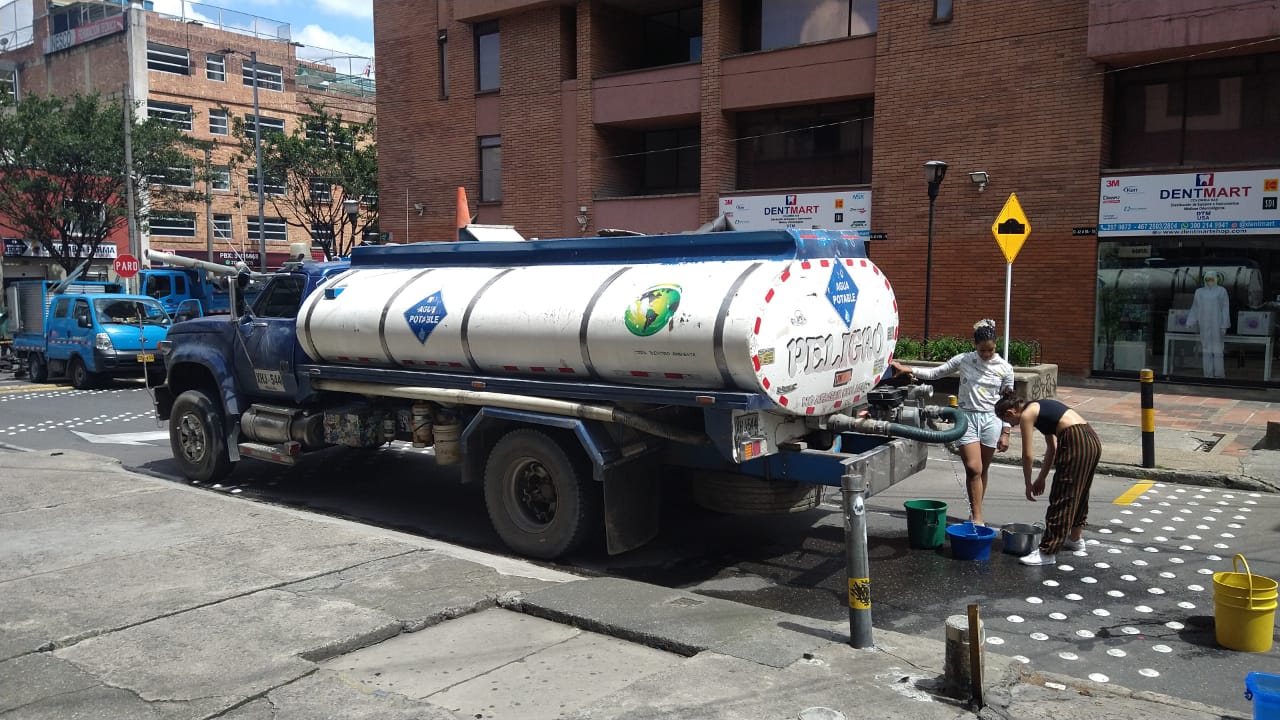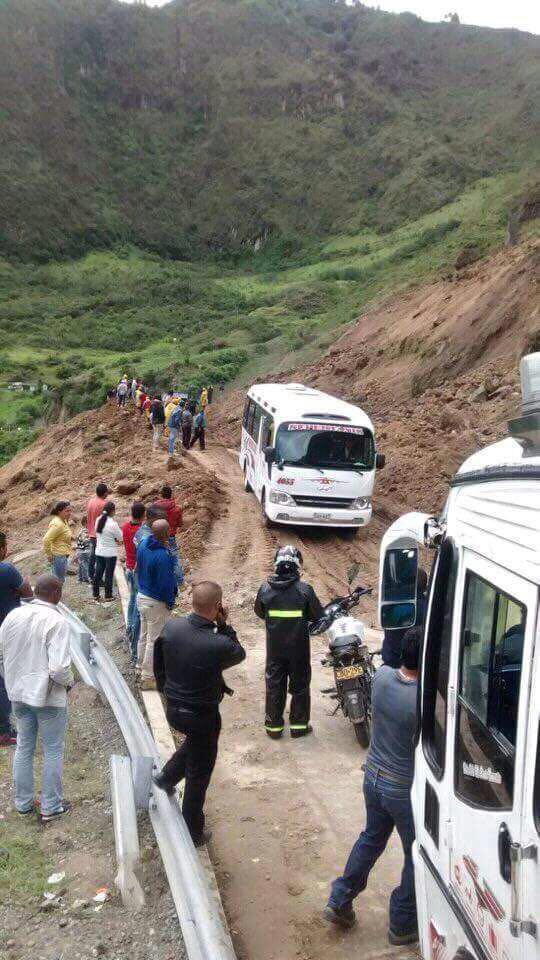
Photo courtesy of @Teleantioquia: Twitter.
“Please immediately withdraw from the Cauca riverbed and its shores. In the following minutes the water flow will increase, downstream of the dam. People should head towards meeting points immediately.”
This statement was issued yesterday morning via Twitter Dapard (the Antioquia Department of Disaster Prevention) after Hidroituango, Colombia’s largest hydroelectric dam project, flooded again.
With a crisis having been declared by experts and the dam in “intensive care”, the nine communities of Valdivia, Puerto Valdivia, Cáceres, Tarazá, Nechí, Caucasia, San Benito Abad, Caimito y Guaranda, all of whom live below the dam, have been ordered to urgently evacuate.
The dam had already flooded this weekend as a result of a blocked tunnel, causing it to flood upstream and destroy two bridges and a medical centre in its path. On Saturday, however, the company building the dam, Empresa Publica de Medellín (EPM), wasn’t so quick to warn the residents to evacuate. As a result, figures currently stand at around 9,000 people who have been forced to flee their homes, with two bridges and a medical centre destroyed. Those evacuated are currently all taking refuge in hostels and emergency centres.
EPM have emphasised, however, that no one has been reported as disappeared, wounded or dead.
According to Blu Radio, three tunnels are blocked, which has generated a geological fault in the fourth tunnel and is causing the river to flood. This combined with the fact that engineers were not prepared for the vast quantities of rain that have fallen over the past week has resulted in serious complications for the progress of the construction of the dam, which was due to begin operations at the end of this year.
Video clips from twitter show extreme flood waters flowing at high speeds and destroying the construction process. Members of the Colombian army, police and disaster management teams along with the Red Cross have been on the scene helping since the weekend.
“The tunnels are designed to evacuate the normal flow of the river Cauca… but once it dams up, there’s a lot of pressure, and once it unblocks, it generates different requirements for the tunnel…for which it was not designed,” Oswaldo Ordóñez, geological engineer at Medellín’s Universidad Nacional explained to Blu Radio.
The construction, worth 11,4 billion pesos, is expected to produce 17% of Colombia’s energy at a rate of 2.400 megawatts per year.
NGO Vivos Antioquia, who are strongly opposed to the construction of the dam, have reported the assassinations of four environmentalists since the beginning of the construction process in 2010. Back in April, this group also ensured that the European Parliament made an emergency call to protect hundreds of bodies of those disappeared during Colombia’s armed conflict that are buried in the surrounding lands.
A letter was also presented to President Juan Manuel Santos, along with the governor of Antioquia and various other legal figures to protect the rights of those who live in nearby communities. According to various reports, throughout the construction process there have been cases of insufficient compensation, lack of relocation, prevention of access to farmers’ lands and health and environmental impacts caused by the construction works.
EPM general manager Jorge Londoño de la Cuesta has this morning reiterated the critical state of the situation. After first putting the extreme flooding down to “unpredictable geological conditions”, he has stressed today that “if the dam breaks, the downstream water flow will be significant and in this case we will have to carry out pretty much total evacuation.”
At the moment, the river Cauca’s water levels are dangerously high, with the community of Puerto Valdivia particularly at risk. 1,200 people in that community alone have been evacuated in the emergency.





